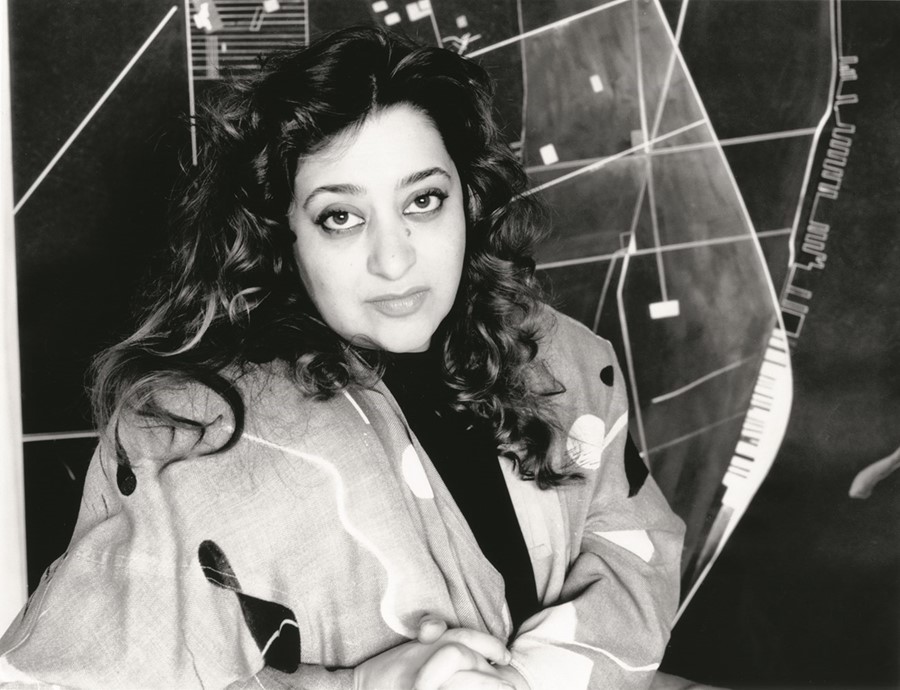At the sad news of her passing, aged 65, we revisit Hadid's enlightening interview with Hans Ulrich Obrist for AnOther Magazine S/S12, in which the trailblazing architect waxes lyrical about her love of clothing
“I’ve been interested in fashion since I was a kid. I used to alter my clothes, cut the sleeves off… Then I went through a phase in London when I used to wrap myself up in fabric. I’d attach it together with pins or staplers, staple together a whole outfit. That’s what I wore all the time, winter and summer. Some of them had fur bits and they were in every colour. I started first by wearing two or three layers of shirts or skirts in different coloured silk.
And then in the 80s I discovered Issey Miyake and Yohji Yamamoto and that’s all I wore. What I liked about Yohji at first was his symmetry, and what I liked about Issey in the early days was not the pleating, it was more the crinkling – beautiful crinkled clothes. I began painting these clothes because they were like a canvas, raw linen. I’ve made presents with painting on them for friends, like cummerbunds and ties. They’re like real paintings, every one is different.”
“I went through a phase in London when I used to wrap myself up in fabric... staple together a whole outfit” – Zaha Hadid
Zaha Hadid is unquestionably the most important female architect in the world, emerging from the tutelage of the legendary Rem Koolhaas in the late 70s to establish her own London-based practice in 1980. Initial projects gained fame and design plaudits, yet were all too often abandoned before construction, leaving her with a reputation for breathtaking but unbuildable designs. This was partly influenced by her rejection of conventional salesmanship; Hadid chooses to present clients with emotive, abstract paintings of her ideas, exploring both the look and inner soul of the buildings she wants to create. In this she has likened herself to a fashion designer, using artistic instincts alongside intense technical research to explore the furthest reaches of what is possible in design and then advancing with meticulous care. Her passion for Miyake and Yamamoto perfectly expresses this combination of style and expertise, and she frequently collaborates with Karl Lagerfeld – her Mobile Art Pavilion designed for Chanel launched in Paris last year. This year, her startlingly beautiful Aquatic Centre will act as the gateway to the London Olympic village.
Dame Zaha Hadid was born on October 31, 1950 in Baghdad, Iraq and died on March 31, 2016 in Miami, USA.
The original version of this article appeared in the Spring/Summer 2012 edition of AnOther Magazine.
